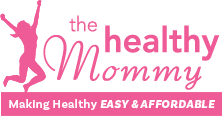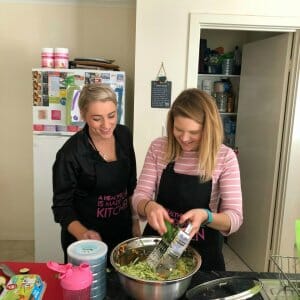New study finds bed-sharing does not increase the risk of SIDS if you are breastfeeding
***Trigger Warning: This content on SIDS may cause some readers distress***
For years, experts have been working tirelessly to determine what exactly causes Sudden Infant Death Syndrome (SIDS). Often the causes are unknown.
Worldwide guidelines currently stipulate that parents avoid sharing a bed with their baby.
However, a new report from the Academy of Breastfeeding Medicine has found that bed-sharing is possible and may beneficial for exclusively breastfed babies.
Bed-sharing does not increase the risk of SIDS if you are breastfeeding, study finds
According to the researchers at the University of Notre Dame, when babies are breastfed at home, in the absence of other risk factors, bed-sharing does not appear to increase the risk of SIDS.
This may be because the study found that breastfed babies do not go into a deeper sleep.
“When breastfeeding mothers sleep with their infants, they protect them from potential physiological stressors including airway covering and overheating by their characteristic sleep position (curled around their infants, making a constrained sleep space with their bodies), known as the C-position,” state the study authors.
“Their continued vigilance through microarousals prompts regular infant arousals throughout the night.
“Compared with breastfeeding infants who sleep alone, breast sleeping infants spend less time in stages [three to four] (deep) sleep, and more time in stages [one to two] (lighter) sleep, facilitating rapid infant awakening and termination of apneas.”

But it seems more research needs to be done into the causes of SIDs and parents should follow the safe sleep guidelines.
“Recommendations concerning bed-sharing must take into account the mother’s knowledge, beliefs, and preferences and acknowledge the known benefits as well as the risks,” add researchers.
“Larger studies with appropriate controls are needed to understand the relationship between bed-sharing and infant deaths in the absence of known hazards at different ages.”
GUIDELINES: What you can do to help reduce the risk of SIDS
1. Sleep your baby on their back

While it was popular to sleep your baby on it’s front in the 1980s, research shows that sleeping a baby on his or her back, not tummy or side, is the safest sleep practice.
2. Make sure nothing is covering your baby’s face
Remove all hats, pillow and toys from your baby’s cot or any loose clothing.
3. Avoid cigarette smoke near your baby
Avoid exposing your baby to tobacco or smoke after birth.

4. Make sure your baby has his own place to sleep
Sleep your baby in a safe place on their own for the first six to 12 months, but that’s in the same room as you for the first six months.
5. Ensure the cot and mattress are secure
Choose a cot that meets Australian Standard AS2172 and ensure the mattress is firm, clean, flat and fits the cot correctly.
6. Make sure all blankets are firmly tucked in
Use a swaddle, baby sleeping bag or tuck in all blankets in the cot.
7. Position your baby at the bottom of the cot
It’s recommended by health care professionals that babies are placed at the bottom of the cot.

8. Breastfeed if you can
Experts believe breastfeeding helps lower the risks of SIDS.
9. Make sure your pram is secure

Make sure there are no loose equipment or straps on the bouncer or pram.
10. Avoid covering the pram
A blanket or sheet can create an unsafe and hot environment for your baby, with little airflow.
11. Keep heaters and electrical appliances away from the cot
Avoid the risk of your baby overheating as well as being burned.
12. Do not leave your baby unattended
It’s unsafe to leave your baby sleeping unattended in a pram, rocker or bouncer.

13. Make sure your baby is awake during tummy time
Tummy time helps your little one strengthen his muscles, but make sure he is awake while doing this and supervised.
14. Dress your baby according to the weather
Make sure your baby is wearing the correct clothing that’s right for the weather.
SIDS is a rare condition and most deaths occur during the first three months of a baby’s life.
If you want more information on SIDS, you can read more here.
For more advice – join The Healthy Mommy’s Support Group
Becoming a mom – especially of the first time – can be an exciting, daunting, confusing and interesting experience. You certainly step into a whole new world – that often feels a whole lot unfamiliar.
Breastfeeding, formula, dummies, cots, mastitis, baby health and development – there are so many things to know and understand.
If you are a new mom wanting to connect with other new moms, ask questions and share your own experiences – you should join The Healthy Mommy’s Facebook Private Support Group.





